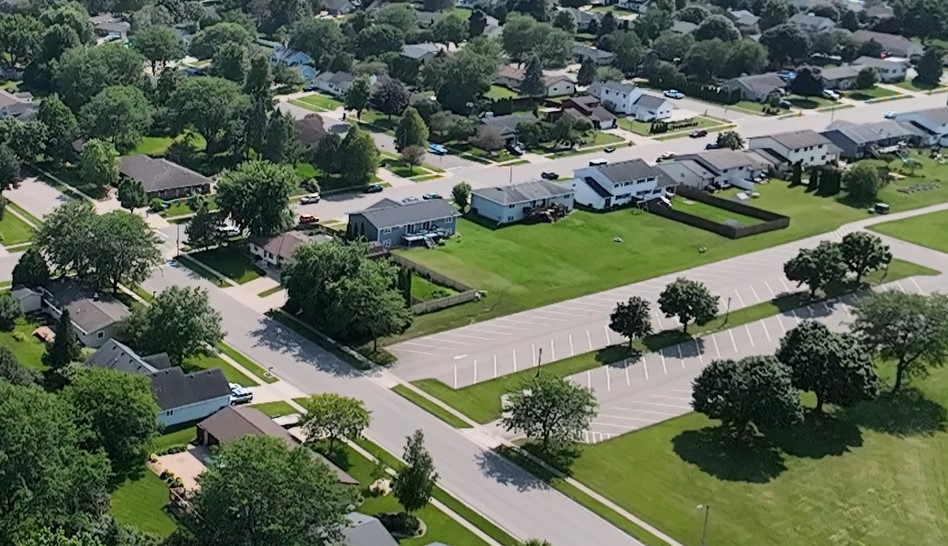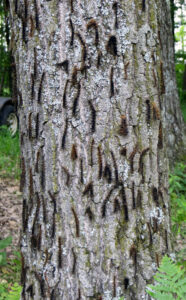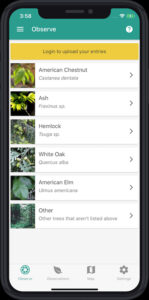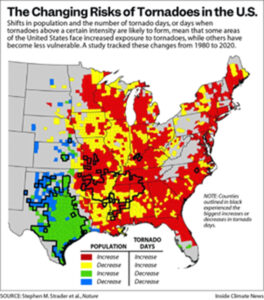 Gov. Tony Evers and the Wisconsin Department of Natural Resources (DNR) today announced the Urban Forestry (UF) Grant Program recipients for the 2025 grant year. In addition to helping fund projects consistent with state and national goals for increasing the urban forest canopy, reducing carbon dioxide and other greenhouse gasses from the atmosphere, and improving the quality of life and public health of communities, the UF Grant Program will help advance goals outlined in Gov. Evers’ Trillion Trees Pledge commitment, which includes planting 1 million trees in urban areas by the end of 2030. Continue reading “Gov. Evers, DNR Announce 2025 Urban Forestry Program Grant Recipients”
Gov. Tony Evers and the Wisconsin Department of Natural Resources (DNR) today announced the Urban Forestry (UF) Grant Program recipients for the 2025 grant year. In addition to helping fund projects consistent with state and national goals for increasing the urban forest canopy, reducing carbon dioxide and other greenhouse gasses from the atmosphere, and improving the quality of life and public health of communities, the UF Grant Program will help advance goals outlined in Gov. Evers’ Trillion Trees Pledge commitment, which includes planting 1 million trees in urban areas by the end of 2030. Continue reading “Gov. Evers, DNR Announce 2025 Urban Forestry Program Grant Recipients”
Taking action
Tree City USA: Wisconsin Can Take The Lead In Growth Awards Earned With Your Help
By Abby Krause, DNR Urban Forestry Coordinator; Abigail.Krause@wisconsin.gov or 608-556-5690
 Tree City USA is an annual recognition program presented by the Arbor Day Foundation that allows communities to publicly demonstrate their continued commitment to the care of their local urban forest. Returning Tree City USA communities are also eligible to apply for Growth Awards. These awards recognize community forestry programs that go above and beyond the four core tenets of Tree City USA.
Tree City USA is an annual recognition program presented by the Arbor Day Foundation that allows communities to publicly demonstrate their continued commitment to the care of their local urban forest. Returning Tree City USA communities are also eligible to apply for Growth Awards. These awards recognize community forestry programs that go above and beyond the four core tenets of Tree City USA.
Wisconsin has consistently proven to be a national leader in the stewardship of the forests outside our front doors all across the state. In 2023, we saw participation from Milwaukee, our state’s most populous city, down to Ephraim, a village of only a few hundred residents. We ranked third nationally in both programs with 194 Tree City USA communities and 26 Growth Awards. Only Ohio and Illinois ranked higher. Continue reading “Tree City USA: Wisconsin Can Take The Lead In Growth Awards Earned With Your Help”
Grant Opportunities
 Five Star And Urban Waters Restoration Grants Due Jan. 30, 2025
Five Star And Urban Waters Restoration Grants Due Jan. 30, 2025
The Five Star and Urban Waters Restoration grant program seeks to develop community capacity to sustain local natural resources for future generations by providing modest financial assistance to diverse local partnerships focused on improving water quality, watersheds and the species and habitats they support. Continue reading “Grant Opportunities”
2024 Spongy Moth Review
By Bill McNee, DNR Forest Health Specialist, Oshkosh;
Bill.McNee@wisconsin.gov or 920-360-0942

A tree shows high numbers of spongy moth caterpillars, though the majority of the caterpillars have been killed either by virus (hanging in an inverted V) or fungus (hanging in a stretched line, head down). The virus and fungus helped to quell a potential outbreak in many areas of the state in 2024. / Photo Credit: Bill McNee, Wisconsin DNR
As the 2023 spongy moth season ended, there were hopes for a return to colder and wetter conditions in 2024 so that the spongy moth outbreak would decline or even come to an end.
What wound up happening in Wisconsin was the “lost winter,” the warmest since recordkeeping began in 1895. Given this warmth, there were concerns that the widespread spongy moth outbreak would continue for a third consecutive summer, with good caterpillar survival, ongoing defoliation and high rates of tree mortality in already stressed forests.
Cooperative Enlists Public To Make Tree Health A Snap
By Art Kabelowsky, DNR Outreach and Communications, Fitchburg;
Arthur.Kabelowsky@wisconsin.gov or 608-335-0167

The main page of the TreeSnap app as seen on a mobile phone. / Photo Credit: TreeSnap.org
It takes more than a village to foster healthy forests. More than a township, a city and a county, too. Sometimes, even more than a state.
That’s why the Great Lakes Basin Forest Health Cooperative (GLB FHC) was formed four years ago by Holden Arboretum in Ohio and the U.S. Department of Agriculture Forest Service.
Geographically, the group’s region encompasses an area from New Jersey to Wisconsin. The Wisconsin Department of Natural Resources (DNR) is an active member.
Continue reading “Cooperative Enlists Public To Make Tree Health A Snap”
Forest Health and Climate Change Resources
By Carmen Hardin, Director, DNR Applied Forestry Bureau, Rhinelander;
Carmen.Hardin@wisconsin.gov

A graphic shows changing tornado risk trends in the United States from 1980 to 2020. All Wisconsin counties are showing an increase in tornado days. / Map Credit: Inside Climate News, Stephen M. Strader et. al., Nature Magazine
We are often asked difficult questions about our forests, their health and how climate change is impacting them. Here is a curated collection of resources that may help you answer some of those questions. Continue reading “Forest Health and Climate Change Resources”
Treatment Of EAB Infestations In Yard Trees
By Abby Krause, DNR Urban Forestry Coordinator;
Abigail.Krause@wisconsin.gov or 608-556-5690
This summer’s detection of emerald ash borer (EAB) in Burnett County means our little metallic friend (or should I say foe?) is now known to be present in all 72 Wisconsin counties.
While EAB has been around for the better part of two decades in Wisconsin, many homeowners are still in the thick of dealing with the fallout of this invasive pest.
Continue reading “Treatment Of EAB Infestations In Yard Trees”
DNR Urban Forestry Grant Update
By Nicolle R. Spafford, DNR Urban Forestry Grants Manager; Nicolle.Spafford@wisconsin.gov or 715-896-7099

The 2025 Urban Forestry Grant application deadline was Oct. 1, 2024, and the Wisconsin Department of Natural Resources (DNR) received 67 applications, totaling over $1 million in funding requests. In total, $629,680 is available in grant funding for 2025. Continue reading “DNR Urban Forestry Grant Update”
Answering Common Emerald Ash Borer Yard Tree Questions
By Abby Krause, DNR Urban Forestry Coordinator; Abigail.Krause@wisconsin.gov or 608-556-5690
This summer’s detection of emerald ash borer (EAB) in Burnett County means our little metallic friend (or should I say foe?) is now known to be present statewide. While EAB has been around for the better part of two decades in Wisconsin, many homeowners are still in the thick of dealing with the fallout from this invasive pest. The management options for a handful of individual yard trees are quite different than dealing with ash in rural forests. Below is info to help with some frequently asked questions you may receive from residents, neighbors, family, friends and anyone else you may be known to as “that tree person.” Continue reading “Answering Common Emerald Ash Borer Yard Tree Questions”
Heterobasidion Root Disease Found In Door County

Two photos of the same spot on a tree in Door County, showing Heterobasidion root disease fruiting bodies (left) and the basal wound beneath them (right). / Photo Credits: Bill McNee, Wisconsin DNR
By Bill McNee, DNR Forest Health Specialist, Oshkosh;
Bill.McNee@wisconsin.gov or 920-360-0942
Heterobasidion root disease (HRD), formerly known as annosum root rot, was recently found in Door County for the first time.
In mid-September, several suspected HRD fruiting bodies were spotted in a white spruce plantation on privately owned land in the town of Sevastopol. One cluster of fruiting bodies located at the base of a dead spruce was confirmed as Heterobasidion irregulare, the fungal pathogen that causes HRD. The other fruiting bodies were identified as a native decay fungus that has a similar appearance.
Continue reading “Heterobasidion Root Disease Found In Door County”
